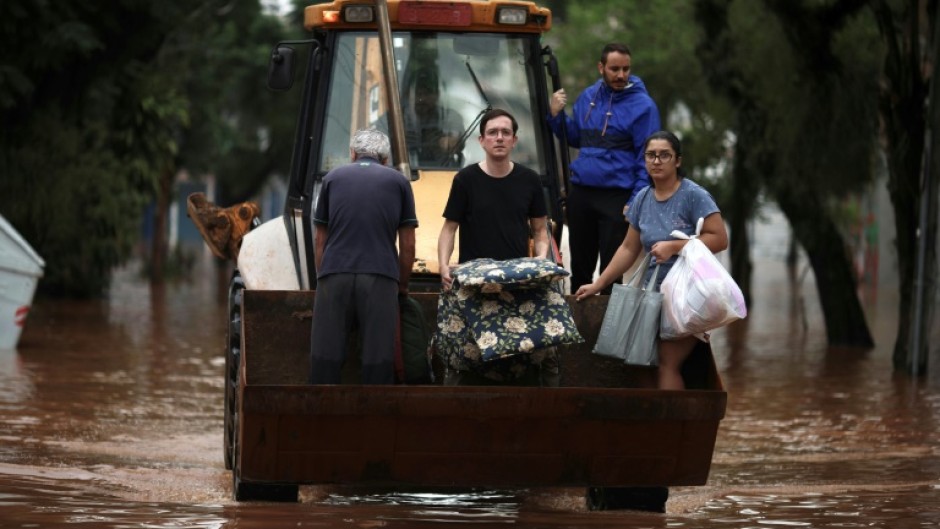PORTO ALEGRE - Authorities in southern Brazil scrambled to rescue people from raging floods and mudslides in what has become the region's largest-ever climate catastrophe, with at least 78 dead and 115,000 forced from their homes.
Entire cities were underwater, with thousands of people cut off from the world by the floodwater, brought by days of torrential rains.
In Porto Alegre, the capital of Rio Grande do Sul state, residents stood on rooftops hoping to be rescued as others in canoes or small boats navigated streets that have become rivers.
After what one climatologist called "a disastrous cocktail" of climate change and the El Nino effect, more than 3,000 soldiers, firefighters and other rescuers were trying to reach residents, who were in many cases trapped without basic supplies such as running water or electricity.
Civil defense officials said at least 105 people were missing in the latest of a string of catastrophic weather events to hit the South American giant.
"It looks like a scene out of a war, and after it is over it will require a post-war approach," Rio Grande do Sul governor Eduardo Leite said, flanked by President Luiz Inacio Lula da Silva and several government ministers.
Lula promised the government would provide all necessary resources for reconstruction.
Besides Porto Alegre, another 341 towns and villages have been hit by the flooding.
Soldiers are setting up field hospitals after hundreds of patients had to be evacuated from regular hospitals, while civilians have also formed volunteer groups to gather basic supplies, including life jackets, water and fuel.
"Everyone helps in their own way, as they can," said Luis Eduardo da Silva, a 32-year-old volunteer.
The Guaiba River, which flows through the city of 1.4 million people, reached a record high level of 5.3 metres, according to the local municipality, well above the historic peak of 4.76 meters that had stood as a record since the devastating 1941 floods.
"Rio Grande do Sul has always been a meeting point between tropical and polar air masses," climatologist Francisco Eliseu Aquino told AFP.
"But these interactions intensified with climate change" to create "a disastrous cocktail that makes the atmosphere more unstable and encourages storms."

